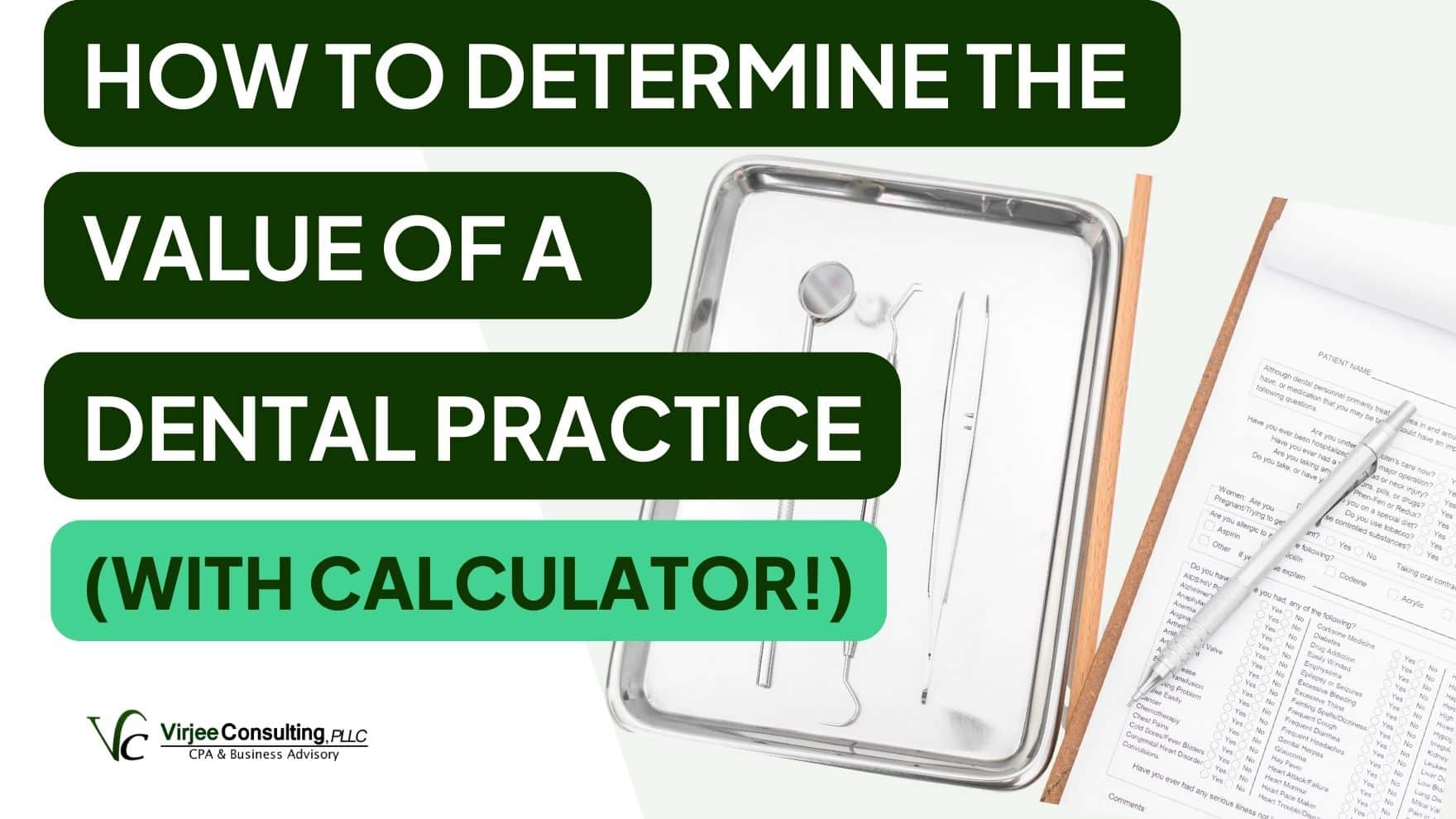If you are thinking about buying or selling a dental practice, you are probably asking the same question as everyone else. How much is it really worth?
It sounds like a simple question, but the answer depends on more than just a headline number. Cash flow, location, and even the layout of the office all play a part. In this post, we will discuss what actually goes into determining the fair and current value of a dental practice in today’s market.
What Are Practices Being Valued At In 2025?
Let’s start by looking at the Value Of a Dental Practice in 2025. As a rough guide, many general practices sell for between 60% and 85% of their annual collections. Understanding this range can help you gauge the potential worth of your own practice.
A practice in a high-demand urban area with strong systems might sell for more, while one in a slower market or with weaker financials could be less.
But the real heart of the Value Of a Dental Practice isn’t just its collections—it’s the cash flow you’ll generate once you’re running it. Two practices with the same top-line revenue can differ greatly in profitability. High overhead, outdated equipment, or scheduling inefficiencies can reduce a million-dollar practice to minimal take-home income. Understanding these factors is key to accurately assessing the true value of a dental practice.
That’s why it’s crucial to dig into the operating profit, rather than just looking at collections. To do that, we have to look at EBITDA (or Earnings Before Interest, Taxes, Depreciation, and Amortization). When you understand the true earnings potential, you’re in a much better position to judge what the practice is worth to you.
Want to read more about EBITDA? Learn the average EBITDA for dentists here
Different Ways To Value A Dental Practice
When people ask how much a practice is worth, they are usually talking about one of a few main approaches. Each one answers a slightly different question. For more details on each method, check out our post on “How To Determine Your Dental Practice Valuation”.
Market-Based Approach
This is the “what are similar practices selling for?” method. It helps estimate the Value Of a Dental Practice by looking at actual sale data or using simple rules of thumb, such as a percentage of collections. While it’s a quick way to see if a price is reasonable, it can overlook important differences in profitability between practices.
Earnings-Based Approach
This approach focuses on what truly drives the Value Of a Dental Practice: its earnings. You calculate adjusted EBITDA (profit normalized for owner perks and one-off items) and multiply it by a market multiple. The multiple accounts for factors like practice size, specialty, growth potential, and transition risk.
For example, if adjusted EBITDA is $300,000 and the multiple is 4, the valuation is $1,200,000. Smaller or riskier practices will usually be at lower multiples.
Discounted Cash Flow (DCF) Approach
This is a forward-looking version of the earnings-based approach. You forecast future free cash flow and then discount it back to today using a required rate of return.
DCF is helpful when you expect the future to look very different from the past, such as a practice with a big expansion plan or large expected patient growth. It’s more detailed and sensitive to assumptions but can be very useful.
Net Asset-Based Approach
This is a “what are the hard assets worth?” method. It adds up the equipment, inventory, receivables, and leasehold improvements and subtracts liabilities.
Use this when the practice is underperforming, has low or negative earnings, or when you are mainly buying equipment or real estate. It usually gives a floor value because it does not include goodwill or patient relationships.
Profit-Based Approach
This approach focuses on the actual profits generated for the owner after all expenses. Once you know that number, you can work backward to decide what you’re willing to pay based on your desired return on investment.
For example, if a practice consistently produces $250,000 in net profit for the owner and you’re looking for a 25% return, you might value it around $1 million. This approach helps align the price you pay with your own financial goals and risk tolerance, rather than a generic industry formula. For insights on compensation and what to expect in different roles, see Pay for Dentists: What to Expect When You Own vs. Associate.
Other Factors That Affect Value
Location still matters when assessing the Value Of a Dental Practice, but it’s more than just geography. A practice in a fast-growing suburb may sell at a premium due to rising patient demand, while a rural practice might be listed at a discount but benefit from a loyal patient base and minimal competition. Factors like local demographics, income levels, competition density, accessibility, and lease or property terms all influence the overall value.
Equipment and layout also matter. A practice with modern digital equipment, efficient layout, and extra space to grow is usually worth more than one that needs a full remodel to scale.
Specialty services can raise the price if you can sustain them. If the current doctor provides a high-value service you cannot, the production could drop fast, unless you or someone on your team is trained to step in.
Finally, look at the seller’s motivation. Are they retiring, burned out, or moving out of state? If their story lines up with the numbers, you can feel more confident. If not, slow down and ask more questions.
Need Help Determining The Value of A Dental Practice?
Whether you’re thinking about buying or selling a dental practice, or just curious about what yours might be worth, understanding how dental practices are valued will put you in a much better position to negotiate with confidence.
At Virjee Consulting, we help dentists make better decisions about buying a new practice or selling their current one.
Why not start with our dental practice valuation calculator?
For a more detailed consultation or a second opinion before you sign, book a free introductory call with us. We’d love to help.

